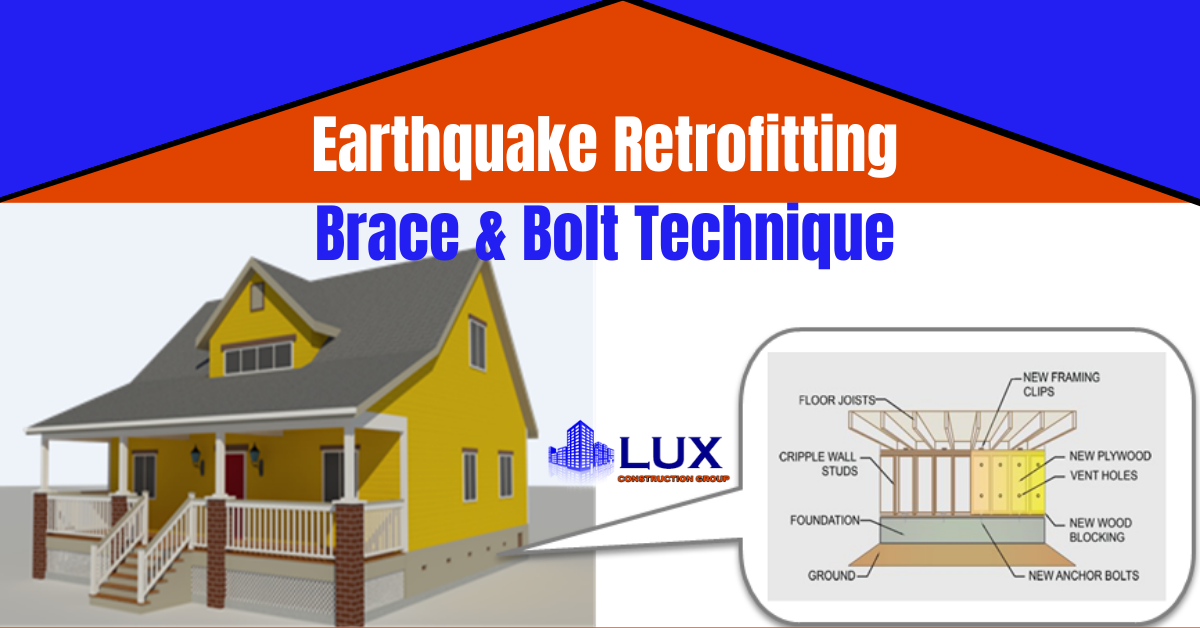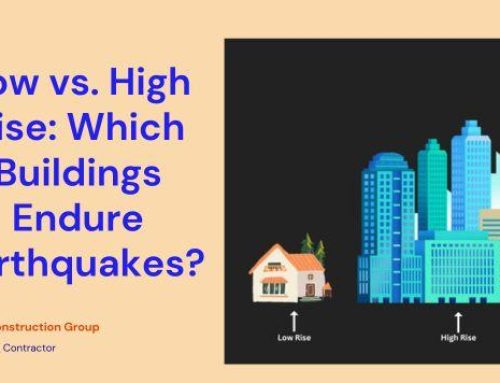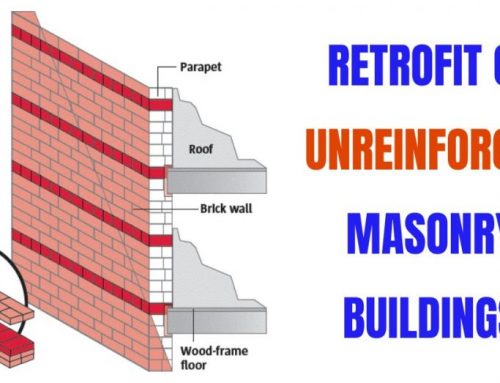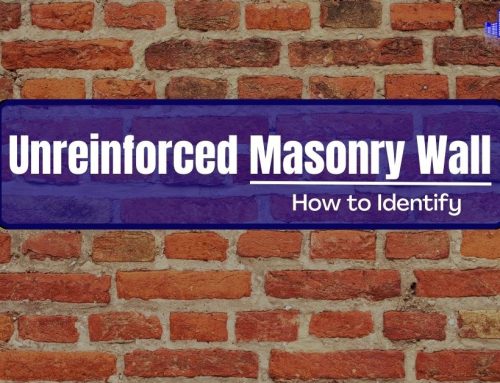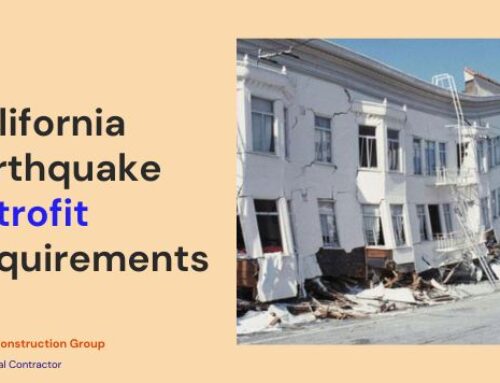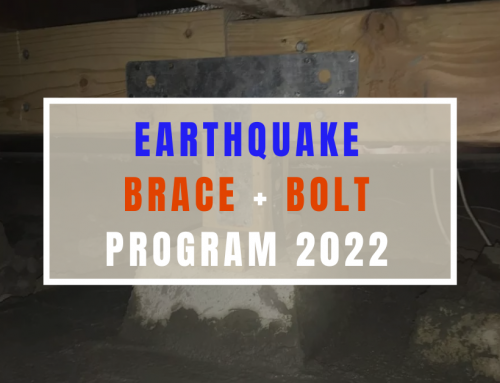Earthquake Brace and Bolt (EBB) retrofit technique is a method for strengthening the structural integrity of an existing building to better withstand seismic activity.
The technique involves installing steel brackets (called “braces”) to the foundation of the building and then bolting the framing of the house to the braces. This helps to transfer seismic forces from the framing to the foundation, reducing the likelihood of structural failure during an earthquake. The EBB retrofit technique is most commonly used on older homes that were not built to modern seismic codes.
Considering retrofitting or bracing and bolting your homes, built on a firm foundation, won’t only withstand earthquake shock forces but also keep homeowners safe. There are over 20,000 soft-story buildings in Los Angeles County alone that must undergo mandatory retrofits.
If you’re considering earthquake retrofitting in Los Angeles to protect your home from earthquake damage, you should hire a licensed earthquake brace and bolt contractor. Such professionals provide a reliable house foundation, depending on the house type and structural damage around the house. Different types of homes require different types of house foundations, including house bolting, cripple wall houses, soft-story structures, etc.
In the following blog, we’ll help in finding out how vulnerable your home is and what you can do to protect it from earthquake damage by reviewing your house type or hazard below. So, let’s take a look!
Contents
- Is Earthquake Brace + Bolt Worth?
- Does My Home Require Seismic Retrofitting?
- Age of Your Home
- Location of Your Home
- How Brace & Bolt Technique Save Your Home from Earthquake?
- What Is Earthquake Brace + Bolt Program (EBB)?
- Different Types of Earthquake Brace and Bolt Retrofitting
- House Bolting/Foundation Bolting
- Expansion Foundation Bolts
- Epoxy-Set Foundation Bolts
- Plate Washers
- Foundation Plates
- Cripple Wall Bracing
- Foundation Holdown Brackets
- Soft Story Structures
- How Much Does Earthquake Brace And Bolt Cost?
- LUX Construction Group – Hire Earthquake Brace And Bolt Contractors!
Is Earthquake Brace + Bolt Worth?
Earthquake Brace and Bolt (EBB) retrofit technique is a cost-effective and efficient way to improve the structural integrity of an existing building and make it more resistant to seismic activity. The technique involves installing steel brackets (called “braces”) to the foundation of the building and then bolting the framing of the house to the braces. This helps to transfer seismic forces from the framing to the foundation, reducing the likelihood of structural failure during an earthquake.
One of the benefits of EBB retrofit is that it can be done on older homes that were not built to modern seismic codes. This means that many older homes in earthquake-prone areas can be retrofitted to improve their safety and reduce the risk of damage or collapse during an earthquake.
Does My Home Require Seismic Retrofitting?
Whether or not your home requires retrofitting depends on a variety of factors, including the age of the structure, the materials used in its construction, and the location of the home. Older homes, particularly those built before modern seismic codes were implemented, are more likely to require retrofitting. This is because they may not have been built with the same level of structural integrity as newer homes.
-
Age of Your Home
Back Before 1980, there were no home protection rules from earthquakes. At that time, many wooden structured homes in Los Angeles haven’t been adequately attached to their foundations. And, when an earthquake occurred suddenly, the whole thing moved unpredictably and fell down the foundation.
So, if your property was constructed before 1980, you’ll likely need to be reinforced and strengthened your home through retrofitting. This is because those homes weren’t made according to the earthquake-related building codes that we have nowadays. Even if your home was built in the 1990s, it still requires additional support and reinforcement.
The construction industry has greatly improved in recent decades, and engineers and builders know a lot more about how to better safeguard against earthquake damage. The majority of homes built since the 1990s have earthquake-resistant features, but not all of them, which is why we recommend a home inspection.
-
Location of Your Home
You also need to think about retrofitting your home if it is located on a hill or in an active seismic zone to prevent damage and injuries. The retrofitting process can keep you and your family safe during an earthquake, as well as reduce the costs of repairs afterward.
An added benefit of retrofitting your home is that you may experience a reduction in insurance premiums. Insurance companies love homes that are more protected against damage.
If you need any assistance or want to know whether your home requires earthquake retrofit in Los Angeles, you can ask our professionals. At LUX Construction Group, our team will work with you to develop a detailed plan and cost model for your construction project whether it is new construction or a renovation.
How Brace & Bolt Technique Save Your Home from Earthquake?
Well, over the years, structural engineering and construction techniques have greatly improved. Even the state (of California) has brought Earthquake Brace + Bolt (EBB) programs for homeowners to lessen their potential for damage during an earthquake.
EBB offers a grant of up to $3,000 toward a seismic retrofit for qualifying older houses. It means if your home is decades old or constructed with wood framing is vulnerable to earthquake damage. But, the good news is that they can benefit enormously from brace and bolt services.
What Is Earthquake Brace + Bolt Program (EBB)?
California Earthquake Authority (CEA) has committed to making the state safer and more resilient to minimize the risk of earthquakes.
If you have an older house, built before 1980, we recommend you strengthen it to make it more resistant to earthquakes. And, this process is known as a seismic retrofit.
So, what is seismic retrofit? A seismic retrofit involves bolting and bracing the house its foundation according to California Existing Building Code Chapter A3.
CEA offers discounts of up to 25% for retrofitted, qualified homes. With CEA’s brace + bolt program, you can fund your seismic retrofit. Hence applying for an EBB means receiving grants of up to $3,000 to strengthen your structure.
In Los Angeles, there is a law for soft story retrofit, which allow you to opt retrofit program for your home.
Different Types of Earthquake Brace and Bolt Retrofitting
Well, there are various techniques that can retrofit your property against earthquakes in Los Angeles. And, the most common forms of reinforcement are – house bolting, foundation bolting, and cripple wall bracing.
Let’s have a look at these techniques in detail!
-
House Bolting/Foundation Bolting
House bolting is also known as foundation bolting. This method involves proper placing and planning to install foundation bolts in critical areas of the property. The main function of this technique is to firmly secure and strengthen the foundation. The house bolts connect the wood framing of the home to its concrete foundation. Oftentimes, a poorly constructed home may have bolts that are too far apart. Whereas, in older homes, these bolts become weak over time and start loosening up.
Therefore, for getting a good bolting strength, careful planning, placing, and installation of foundation bolts is all that matters. However, make sure that the bolts match the existing conditions of the home and its foundation. After all, the type of bolt load or stress is also an important factor to consider when selecting bolts.
Typically, there are two types of foundation bolts – expansion bolts and epoxy-set bolts.
-
Expansion Foundation Bolts
Expansion type foundation bolts are also known as mechanical foundation anchor bolts. They are used primarily in seismic retrofitting to anchor mudsills to foundations. It’s considered best to use them for houses with newer foundations or when the concrete is in good condition, as they require good concrete strength to function.
According to the current ABAG Standard Plan A for earthquake bracing and bolting, expansion bolts may work well until it doesn’t cause cracking of the concrete. Mechanical anchor bolts are very effective in these cases when they are properly installed in accordance with the manufacturer’s specifications.
-
Epoxy-Set Foundation Bolts
These types of foundation bolts are an effective choice for older homes where the concrete has become over time. Epoxy-set foundation bolts work well if any earthquake force occurs and don’t let pull off the bolt upward or out of the concrete.
In addition, epoxy anchors are longer in size that inserts deeper into the concrete to strongly hold the foundation. This is especially suitable if there is additional base framing between the cripple wall studs for the structural plywood anchorage of a shear wall.
-
Plate Washers
Recently, the clamping washers are installed with retrofit anchor bolts. So, the mudsill stay clamped more securely to the foundation. Now, hot-dip galvanized 3″ x 3″ x ¼” square washers under anchor bolt nuts are now mandatory. These clamping washers are more effective to provide adequate holding strength than the older type of round washers usually used in houses built before 1990.
-
Foundation Plates
Sometimes, it’s hard to get an adequate vertical clearance under a home to properly anchor the mudsill to the foundation with conventional anchor bolts. In such a situation, using Universal Foundation Plate or UFP10 plate help in anchoring bolts properly.
-
Cripple Wall Bracing
If your home has a short wood-framed wall in the sub-area crawl space, there is a good chance that you will need to brace your cripple wall. From the top of the concrete foundation to the bottom of the main floor, this could be anywhere from a few inches to several feet in height.
A large earthquake can cause these wood-framed walls (aka cripple walls) to collapse as the earth trembles back and forth. A collapsed cripple wall will lead to the home’s main floor crumbling to the ground, causing the house to be destroyed.
The second type of earthquake retrofit is cripple wall bracing which helps to brace the front and back of the plywood that runs beneath the property, ensuring it can withstand the intense shaking of an earthquake.
-
Foundation Holdown Brackets
Some properties in Los Angeles require additional holdown brackets to anchor shear walls. These brackets are particularly designed to resist shear wall lifting or rolling effects which generally occur during earthquake activity. Hold down brackets are usually installed at the ends of shear walls. And, this installation is done with an extra-long and more deeply set epoxy-anchored bolt, which provides better resistance to the lifting stresses.
-
Soft Story Structures
Properties, including homes, apartments, and commercial buildings – all require seismic retrofitting in Los Angeles that were constructed with a soft story.
Generally, soft-story properties are multi-level buildings with a first floor or room that builds on top of open space. As a result of the opening of the bottom floor, such structures lack the strength to withstand lateral shaking in an earthquake. And that’s why the soft story retrofit in Los Angeles is mandatory since soft-story structures were most likely to collapse and destroy during the Northridge earthquake. In addition to plywood bracing, a steel moment frame can be added to a soft-story structure to reinforce it.
How Much Does Earthquake Brace And Bolt Cost?
The earthquake brace and bolt cost can vary. Well, there isn’t any standard cost for seismic retrofitting a property because it depends on the brace and bolt types of retrofits, which could range from $3,000 to $8,000. In terms of square footage, you expect to pay between $2 to $3 per square foot, without labor. With labor, costs revolve around $3 to $7 per square foot.
For knowing in more detail – how much a seismic retrofit costs in Los Angeles, read here.
Investing in retrofitting your home to strengthen it won’t only lessen the risk of damages but also save six figures on repair costs.
Retrofitting your house protects against future earthquake damage. You may incur much lower costs after a retrofit than after a devastating earthquake, which can force you to leave your home and require significant repairs.
LUX Construction Group – Hire Earthquake Brace And Bolt Contractors!
Keep in mind that brace and bolt aren’t possible without professional earthquake brace and bolt contractors. Relying on such a proficient and skilled team won’t only minimize the risks of earthquake damage but also saves a lot of money that you’ll spend on repairs, which can be much higher than bracing and bolting.
So, don’t wait too long! Give us a call today at (424) 248-5090 or email us at [email protected]. We are a construction contractor in Los Angeles, handling all the project planning, pre-construction permits, architects, and construction properly. From Dental Office Construction, Seismic Retrofit Construction to soft-story construction in Los Angeles – we construct dreaming buildings.
Look at our portfolio!

